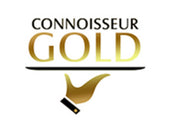Edible Gold Leaf Across the World - Ireland
- by sam@wrightsoflymm.co.uk User
The History and Uses of Edible Gold Leaf in Ireland
Historical Background
Gold leaf, particularly 24-carat and 23-carat varieties, has been a symbol of opulence and grandeur for centuries. The tradition of consuming gold dates back to ancient Egypt, where it was believed to have mystical and medicinal properties. In medieval Europe, gold leaf and gold dust were consumed by nobility as a status symbol and a supposed health tonic.
In Ireland, the use of edible gold leaf can be traced to the influence of European culinary and artistic traditions. During the medieval and Renaissance periods, gold leaf was used in manuscript illumination, particularly in religious texts like the Book of Kells. Though not directly related to culinary use, this indicates the Irish familiarity with the material. As trade routes expanded, gold leaf and gold flakes became more accessible to the upper classes, who sought to emulate continental European dining customs.
Culinary Uses in Ireland
Today, edible gold leaf has found its way into modern Irish cuisine, primarily in high-end dining and artisanal food production. It is often used to embellish desserts, confectionery, and luxury beverages. Gold dust and gold flakes are sprinkled on chocolates, cakes, and pastries to add a shimmering effect, while full sheets of 23-carat or 24-carat gold leaf are sometimes draped over gourmet dishes for dramatic presentation.



One of the most well-known uses of edible gold in Ireland is in high-end chocolate production. Irish chocolatiers use gold dust and gold flakes to enhance the visual appeal of truffles and pralines, appealing to both local and international markets. Similarly, some whiskey distilleries incorporate gold leaf into their premium blends, offering a luxurious drinking experience that ties into Ireland’s rich history of whiskey production.
Irish chefs and pastry artisans also use edible gold and silver flakes to decorate wedding cakes and fine pastries. The presence of silver dust and gold dust in bakery items symbolizes wealth and prosperity, making them particularly popular for celebratory occasions.
Symbolism and Modern Trends
Beyond food, edible gold leaf holds a symbolic significance in Irish culture. As Ireland experiences a renaissance in artisanal food and luxury products, gold leaf has become a marker of exclusivity and craftsmanship. Chefs and mixologists continue to push the boundaries, incorporating gold dust into cocktails, where it enhances premium liquors and adds a touch of extravagance.
Recently, social media has also played a role in popularizing edible gold leaf in Ireland. Viral food trends have encouraged restaurants and bars to introduce gold-covered steaks, gold-infused cappuccinos, and even edible silver dust-coated desserts. While some may view this as a passing trend, it speaks to the enduring allure of gold in culinary arts.
Conclusion
The use of gold leaf, gold dust, and gold flakes in Ireland has evolved from medieval manuscript illumination to contemporary culinary art. Today, both 23-carat and 24-carat edible gold continue to be a sought-after element in fine dining and luxury food production. Whether enhancing the visual appeal of a gourmet dish, adding grandeur to Irish whiskey, or elevating artisanal chocolates, gold leaf remains a symbol of refinement and indulgence in Ireland’s evolving gastronomic landscape.





